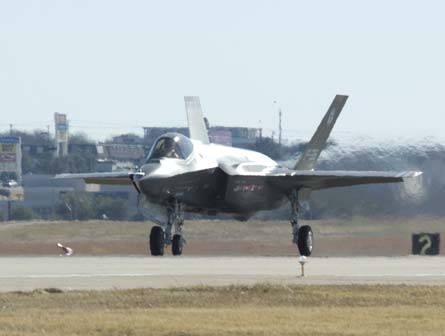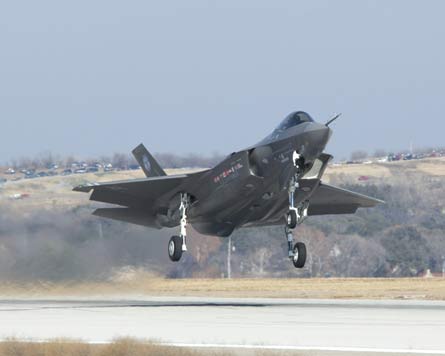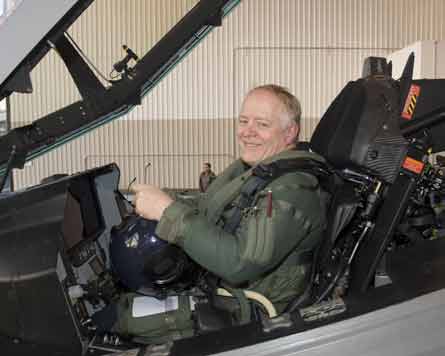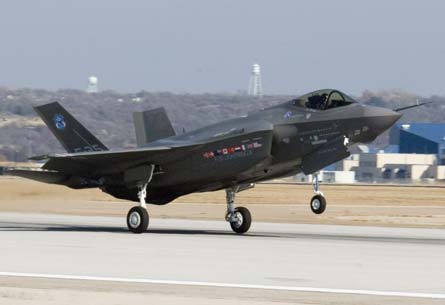Lockheed Martin’s F-35 Lightning II Joint Strike Fighter exceeded expectations on its 15 December first flight, despite a sensor anomaly that curtailed testing. “The aircraft handled well, better than the simulator,” says F-35 chief pilot Jon Beesley, at the controls for the 35min maiden flight from Fort Worth, Texas.

Beesley was surprised by the aircraft’s performance on take-off, saying: “The climb-out was steeper than I anticipated.” He praises the responsiveness and controllability of the aircraft and its engine, the 40,000lb thrust-class Pratt & Whitney F135: “I could fly to a test point and put the aircraft where I wanted to.”
|
|---|
First F-35 take-off |
The aircraft was flown to 15,000ft (4,600m) and 225kt (415km/h) with the landing gear down, then slowed to approach speed. “The first three sets of test points were to make sure we could land,” Beesley says.
|
|---|
Chief pilot Jon Beesley |
The test plan then called for the gear to be retracted, but there was a small sensor anomaly and mission rules required the aircraft to come back, he says, describing the problem as a calibration issue with one of the air-data probes. “There was an angle-of-attack miscomparison. It was a little off,” he says.
Redundancy in the air-data system ensured the aircraft flew safely, says Dan Crowley, F-35 programme general manager. The sensor design has already been changed for future JSFs, he says: “We will go away from this type of probe to a new type.”
The original plan to cycle the gear during a 60min first flight was “aggressive”, according to Beesley. “We didn’t want to be bored, so we planned to raise the gear. That would have exceeded other programmes.”
“We completed the majority of flight-test points,” says Crowley. “The few related to raising the gear were not accomplished, but we are really pleased with the quality of flight test data we got.”
|
|---|
First F-35 landing |
Lockheed plans to fly the first JSF, aircraft AA-1, five to six times a month over the next 18 months as it completes construction the 14 “optimised airframe” F-35s that will be used for the bulk of the 6,000-plus test flights. The first of these – BF-1, the first short take-off and vertical landing F-35B – is scheduled to fly in 2008.
Although structurally different, AA-1 is representative of the production aircraft, says Crowley: “Fit, finish and quality is the same as you will see in production. We have proved you can make a distributed international team work collaboratively.”
“I have never been involved with a first aircraft that was so solid, yet so sophisticated,” says Beesley. “We flew around 90% of what will be in the other aircraft.” This includes the navigation system and “finger-on-glass” touchscreen cockpit displays.
The F-35’s electrically signaled and actuated flight controls worked flawlessy, Beesley says, adding: “This is the first electric jet.” Handling qualities are similar to, but better than, those of Lockheed’s F-22, he says, adding: “It flies like a smaller and quicker Raptor.”
Tom Burbage, general manager, F-35 programme integration, says that, as soon as the F-35 lifted off from the Fort Worth runway, his cellphone began ringing with calls from the international JSF partners. “This was a flight that was heard around the world,” he says.
Click here for Flight's F-35 cutaway
Click here for Flight's F-35 special feature
External links:
Lockheed Martin
F-35 Joint Strike Fighter program
Pratt & Whitney
Team JSF
Source: Flight International



















